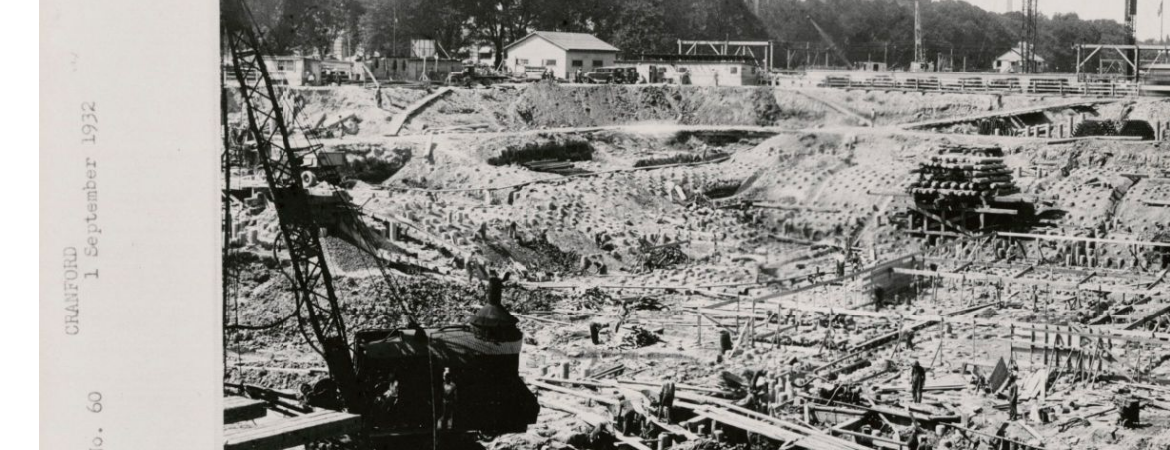1. BUILDING SITES

The SAA’s first category of focus in ensuring the protection of archival materials is the building site–that is, the location of the archival facility itself.
Considerations and Rationale:
In considering building sites as a guideline, the SAA reasoned that the location and selection of the site of the archive facility can drastically affect how well protected records will be–particularly against natural disasters. This guideline was catered specifically towards architects and those renovating archival facilities. Aside from location, cost, and availability of the building site, the SAA notes that issues such as the archive facility’s proximity to water, hazardous materials or locations in which air or ground pollution can be an issue can contribute to the overall health of archive records.
Overall, the SAA notes that Archivists and designers should take into consideration the location, size, security, accessibility of the site and must review and consider environmental conditions as well as the potential effects that the site will have on natural resources.
GUIDELINES
In selecting a building site, the SAA provides the following guidelines:
I. LOCATION:
When selecting an Archive facility site, the SAA notes that the site should should not be liable to the following:
- Subsidence or flooding (SAA, 2009, p.8)
- A location that is prone to earthquakes, tsunamis, and landslides (SAA, 2009, p.8)
- At risk to fire, explosions or impacts from or related to adjacent/nearby sites or in adjacent parts of the same building (SAA, 2009, p.8)
- Near a strategic installation or symbolic site that could be a target of armed conflict (SAA, 2009, p.8).
- Near an industrial or agricultural facility or other installation emitting harmful gases, smoke, dust, etc (SAA, 2009, p.8).
- Within a polluted area (SAA, 2009, p.8)
- On or immediately adjacent to contaminated land, including landfill sites (SAA, 2009, p.8)
- Beneath or adjacent to a source of electromagnetic radiation (SAA,2009. p.8)
- Near a place or a building that attracts rodents or insects (SAA, 2009, p.8).
II. SIZE:
The size of the archival facility should be large enough to accommodate:
- Building footprint, including future expansion (SAA, 2009, p. 9)
- Site access and service roads (SAA, 2009, p.9)
- Sufficient parking (SAA, 2009, p.9)
- Sufficient tour bus or mass transit loading areas (SAA, 2009, p.9)
- Space for required storm water management areas (SAA, 2009, p.9)
- Turning radii and maneuvering space for large vehicle provisions for 53 foot delivery truck (recommended) (SAA, 2009, p.9)
- Circulation for trash pickup from designated dumpster areas (SAA, 2009, p.9)
- Separation between drop off areas, parking, loading, and the building if recommended as apart of a comprehensive security plan (SAA, 2009, p.9).
III. SURVEYS:
The SAA notes that a surveys that are performed should include:
- Boundary/property lines (described by course and distance as well as a written legal description) (SAA, 2009, p. 11)
- Location of improvements (SAA, 2009, p. 11)
- Identification of all easements (SAA, 2009, p. 11)
- Utilities (SAA, 2009, p. 11)
- Trees (SAA, 2009, p. 11)
- Topography (SAA, 2009, p. 11)
- Legal title search (SAA, 2009, p. 11)
IV. GEOTECHNICAL INVESTIGATIONS:
A complete geotechnical investigation should be completed for any site selected for an archival facility (SAA, 2009, p. 11) and should address the following:
- Depth to bedrock and groundwater (SAA, 2009, p. 11)
- Soil strata (SAA, 2009, p. 11)
- Percolations rates (SAA, 2009, p. 11)
- Pavements and drainage recommendation (SAA, 2009, p. 11)
- Geometrical activity (SAA, 2009, p. 11)
V. OTHER CONSIDERATIONS:
In addition to above, those involved in site selection of an archive facility should also consider the following:
- A site that is within a short response time of emergency services and capable of allowing swift evacuation of people in the event of an emergency.(SAA, 2009, p. 8-9)
- Roads, fire lanes, and parking areas should be designed to permit unrestricted access for emergency vehicles. (SAA, 2009, p. 17)
- A site that is accessible to potential users and to cultural and educational institutions (SAA, 2009, p. 9)
- A site that is accessible to main roads and public transportation (SAA, 2009, p. 9)
- Site design–including building zoning and preservation regulations, energy concerns, security, utilities, and landscaping requirements (SAA, 2009, p. 13)
- A site that is deemed to be owned or funded in whole or in part by the federal government and contains a historic structure, or impacts a historic district should consider the application section 106 of the Historic Preservation Act (SAA, 2009, p. 13)
- Sites certified through the Leadership in Energy and Environmental Design (LEED) Green Building Rating System of the U.S. Green Building Council, should adhere to the guidelines for archival facilities before implementing LEED features for credit (SAA, 2009, p. 14)
- The landscaping should be designed for water control, integrated pest management and low maintenance (SAA, 2009, p. 14)
- A site free from pools and fountains (SAA, 2009, p. 15)
- Cleanouts must be provided on all sanitary severe and storm drainage lines that are approximately 5 feet away from the building and at all line bends where manholes are not used (SAA, 2009, p. 16)
- Electric power (SAA, 2009, p. 16)
- A facility that is considering inputting a telephone must run the primary telephone line underground in conduit from the property line (SAA, 2009, p. 17)
- Parking, bus drop offs, and parking spaces for the disabled should be designed to accommodate sustained peak visitation periods (SAA, 2009, p. 17)
- Site security and security risk assessments (SAA, 2009, p. 14)
- Archeological assessments for land that is financed in whole or in part with public funds or on private land with private funds (SAA, 2009, p.12)

